Primary extinguishing media
Fire extinguishers, internal fire hydrants, fire shields with equipment and sand boxes are considered primary fire extinguishing equipment. The use of these means for extinguishing a fire is allowed only with knowledge and observance of the fire safety instructions.
Fire extinguishers
Powder or carbon dioxide fire extinguisher, volume about 3 liters. It will help to cope with open flames and ignition of electrical appliances under voltage.
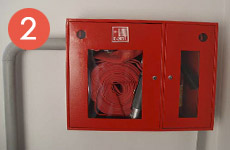
Fire crane
Fire hydrants are designed to extinguish fires and ignitions in the initial stage of occurrence, as well as to extinguish developed fires as an auxiliary means in addition to the jets supplied from fire engines. Placed in a special locker, equipped with a barrel, a sleeve connected to a crane.
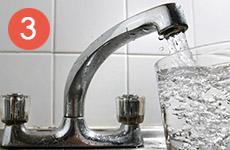
Water
Water is the most common fire extinguishing agent. Its fire extinguishing properties consist mainly in the ability to cool a burning object, to reduce the temperature of the flame. Being fed to the combustion center from above, the non-evaporated part of the water wets and cools the surface of the burning object and, flowing down, makes it difficult to ignite the rest of the parts not covered by the fire.
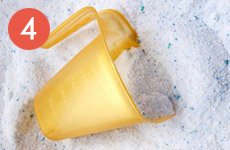
Soda and washing powder
Baking soda is part of the powder used in powder fire extinguishing systems. It displaces oxygen from the combustion site with the emitted carbon dioxide. Washing powder and salt isolate the fire from oxygen, thereby helping to extinguish it.
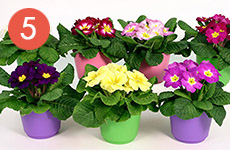
Flower pot earth
Sand and earth are successfully used to extinguish small hotbeds of combustion, including spills of flammable liquids (kerosene, gasoline, oils, resins, etc.). You can extinguish a fire at home using soil from a flower pot, especially if it is wet.

Woolen blanket
Dense non-synthetic fabric also acts like a felt mat. Thrown on the fire, it localizes combustion in the initial stage of the fire, by blocking the access of oxygen.
The sooner an incipient fire is detected and extinguished, the more chances there are to prevent serious consequences of the fire. A small fire in the initial stage can be dealt with with a glass of water, lemonade, juice. To get out of a critical situation, it is important to think over your actions in advance, to know which of the available means you can use to extinguish a fire.
- Water has been used for extinguishing fires for a long time. It is affordable and affordable. When water hits a burning object, it cools it, and the resulting steam prevents oxygen from reaching the combustion site. But it must be remembered that energized electrical appliances cannot be extinguished with water. You can start extinguishing with water only by completely de-energizing the devices. It is also impossible to extinguish burning flammable liquids with water, since their density is less than the density of water. Gasoline, oils, kerosene float to the surface of the water and continue to burn and spread, increasing the area of ignition. And the scattering burning spray can cause you serious burns.
- Soda, which is part of the charge of powder fire extinguishers, is found in almost every kitchen. When it enters a fire, it emits carbon dioxide, displacing oxygen from the ignition site. Baking soda can be used to extinguish live electrical appliances.
- Cooking salt and laundry detergent will help isolate it from the ingress of oxygen if it comes into contact with a burning object, helping to extinguish the fire.
- Flower pot earth will cope with a small fire in an apartment. Sand and earth are often used to extinguish the fires of spilled flammable liquids, therefore boxes with sand are required when equipping gas stations and garage cooperatives.
- A dense fabric, a non-synthetic blanket, when thrown over a fire, will block the access of oxygen to the source of the fire and help extinguish it. If a person's clothing caught fire, then covering it with a cloth can knock down the flame. It should be remembered that in such cases, you should not cover the person with a cloth with his head.
Primary extinguishing media
Primary fire safety equipment includes fire extinguishers, internal fire hydrants, fire shields with equipment and sand boxes. The use of primary fire extinguishing equipment is allowed only with knowledge and observance of fire safety instructions.
Features of the use of fire extinguishers when extinguishing fires
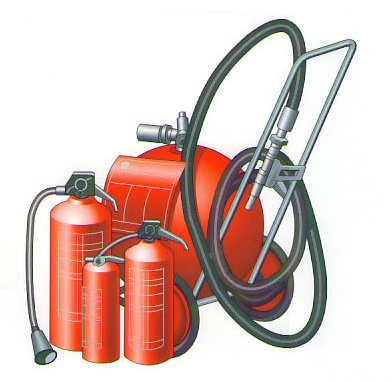 For the effective use of fire extinguishers, it is necessary not only to comply with the instructions for a given type of fire extinguisher, but also to soberly assess the situation for a specific type of fire. Read the instructions for the fire extinguisher in advance. The types of fire extinguishers are determined based on the location of their installation and the types of materials and substances that can be ignited.
For the effective use of fire extinguishers, it is necessary not only to comply with the instructions for a given type of fire extinguisher, but also to soberly assess the situation for a specific type of fire. Read the instructions for the fire extinguisher in advance. The types of fire extinguishers are determined based on the location of their installation and the types of materials and substances that can be ignited.
You should approach the fire site in such a way as not to get under the influence of fire and smoke. In windy conditions, approach from the windward side.
A jet of extinguishing agent from a fire extinguisher must be directed not at the tongues of flame, but at the burning substance.
When the fire source is located in a hard-to-reach place, it is necessary to direct the jet from the fire extinguisher so that it does not split against obstacles. After assessing the situation, you can use an overhanging wall or thick pipe as a "screen" that allows you to spray a fire extinguishing agent over the entire area of the fire.
If the fire site has a large area and there are several fire extinguishers, then in the presence of the required number of people, it is more efficient to use several fire extinguishers at once, rather than use them in turn.
It should be remembered that the flame may re-ignite when used. It is necessary to extinguish the hearth until the complete cessation of smoldering.
All fire extinguishers must be replaced or recharged after use.
Fire crane
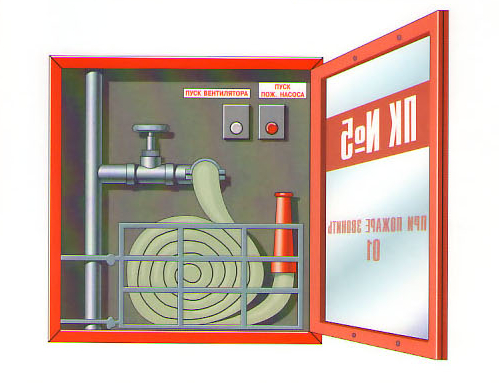 Internal fire hydrants are installed in residential, industrial, and office buildings. It is necessary to monitor their safety, as people's lives often depend on it. A complete set of a fire hydrant is often plundered by hunters for non-ferrous metal, teenagers.
Internal fire hydrants are installed in residential, industrial, and office buildings. It is necessary to monitor their safety, as people's lives often depend on it. A complete set of a fire hydrant is often plundered by hunters for non-ferrous metal, teenagers.
Fire hydrants are used not only to extinguish fires at an early stage of development, but in addition to the jets of water supplied from fire brigade vehicles.
The fire hydrant in the cabinet includes a valve, a fire hose connected to it and a fire nozzle.
In the event of a fire, it is necessary to break the seal or remove the key from the window on the door, open the cabinet, roll out the sleeve. Check the connection of the valve with the sleeve and the barrel and then open the valve by turning it counterclockwise until it stops.
For the convenience of using the fire hydrant, it is recommended to act together. One opens the cabinet door. The second, taking the barrel in his left hand, and holding the fire hose with his right, runs to the hearth of the fire. After laying the hose, the first person opens the fire hydrant and turns on the pump button (if any), letting water in to the fire.
When working with the barrel, it is necessary to take a position that allows you to see the source of fire. You should advance towards the spread of fire. A stream of water is directed to the fire. Burning vertical surfaces are extinguished from top to bottom.
If one person will work as a fire hydrant, then first it is necessary to lay a hose to the place of fire, then return to the tap and open it. Then quickly return to the source of the fire and start extinguishing.
Fire hydrants are subject to technical inspection immediately before acceptance and at least once a year are checked for operability by running water. The result of the check is recorded in the log.
Fire shield
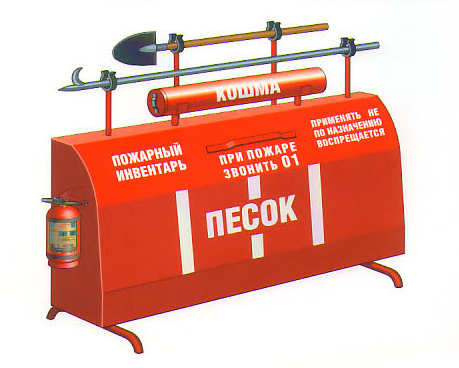 Primary fire extinguishing means and equipment are placed on the fire panel. Just like fire cabinets, they must be protected from theft. It is forbidden to take equipment from the fire panel for improper use.
Primary fire extinguishing means and equipment are placed on the fire panel. Just like fire cabinets, they must be protected from theft. It is forbidden to take equipment from the fire panel for improper use.
The standard equipment of the fire shield includes a crowbar, a shovel, a hook, two cone buckets and two fire extinguishers.
A fire hook and crowbar are used in extinguishing fires for dismantling roofs, walls, rafters, partitions and other parts of buildings, as well as for pulling burning materials from the fire site.
A fire shovel is used to extinguish or localize weak ground fires by filling the fire with soil or sand, as well as to clear fire places and drag burning materials.
The fire cone bucket is designed for manual delivery of water or sand to the place of fire.
Fire-fighting cloth (felt) is designed to localize fires in the initial stage, by blocking the access of oxygen. By wrapping the canvas around the victim, it extinguishes the body and clothing of the person. Provides combustible structures and equipment during hot work. Neatly folded sheets of fiberglass are packed in a red or other colored container. The containers are hung on the fire board. The koshma is quickly brought into working condition, for which it is necessary to open the valve at the bottom of the container and pull out and open the panel using two sewn-on handles.
A sand box is installed next to the fire shield.
Fire shields should be located in production and storage facilities that are not equipped with an internal fire-fighting water supply and automatic fire extinguishing installations. Garage cooperatives, car parks and garden partnerships also need to be equipped with a fire shield.






